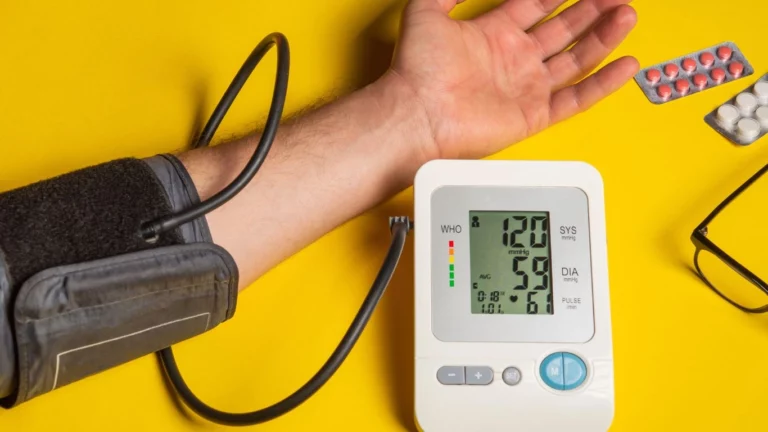How Yoga Poses Relieve GERD: 5 Effective Poses You Must Try!
If you’ve ever struggled with GERD (Gastroesophageal Reflux Disease), you know how tough it can be. The constant burning sensation, that uncomfortable feeling in your chest after meals—it’s downright miserable. And let’s be real, popping antacids all the time isn’t the best solution, right? That’s why today, I want to talk to you about something that might sound a bit unexpected but can actually make a huge difference in how you manage GERD: yoga.
In my experience as a GERD expert, I’ve seen how how yoga poses relieve GERD symptoms by improving digestion, reducing stress, and helping with posture. It might not be a quick fix, but with consistent practice, yoga can make your GERD symptoms a lot more manageable. So let’s dive into it!
What Is GERD, and Why Do We Need to Manage It?
 Before jumping into the yoga world, let’s quickly talk about GERD and why it’s so important to address it. GERD occurs when stomach acid or bile flows back into the esophagus (that’s the tube that connects your mouth to your stomach), which causes irritation and discomfort. It can lead to heartburn, chest pain, regurgitation (ugh, that feeling of food coming back up), and difficulty swallowing. The tricky part is that GERD can be triggered by so many things—stress, poor diet, and even poor posture. But the good news is, by improving these areas, especially stress levels and posture, you can significantly reduce your GERD symptoms. Yoga is all about the mind-body connection, so it’s no surprise that it can work wonders for people like you who are dealing with this condition.
Before jumping into the yoga world, let’s quickly talk about GERD and why it’s so important to address it. GERD occurs when stomach acid or bile flows back into the esophagus (that’s the tube that connects your mouth to your stomach), which causes irritation and discomfort. It can lead to heartburn, chest pain, regurgitation (ugh, that feeling of food coming back up), and difficulty swallowing. The tricky part is that GERD can be triggered by so many things—stress, poor diet, and even poor posture. But the good news is, by improving these areas, especially stress levels and posture, you can significantly reduce your GERD symptoms. Yoga is all about the mind-body connection, so it’s no surprise that it can work wonders for people like you who are dealing with this condition.
Why Yoga? How Does It Help with GERD?
 Yoga is often seen as this calming practice that can help with flexibility and relaxation. But trust me, it does way more than that, especially when it comes to managing digestive issues like GERD.
Yoga is often seen as this calming practice that can help with flexibility and relaxation. But trust me, it does way more than that, especially when it comes to managing digestive issues like GERD.
1. Stress Reduction
One of the biggest culprits behind GERD flare-ups is stress. I’ve worked with so many people who experience that dreaded acid reflux when life gets overwhelming. When we’re stressed, our body releases cortisol, the stress hormone, which can mess with our digestive system. Yoga, with its deep breathing and mindful movements, can help keep stress in check. You’re literally teaching your body how to relax, which can help reduce those unwanted acid reflux moments.
2. Digestive Boost
Yoga poses help stimulate the digestive organs and can enhance the process of breaking down food. Trust me, I’ve seen it in action! By practicing specific poses that target your stomach and abdomen, you can help improve the efficiency of your digestive system. This not only helps prevent reflux, but it also reduces bloating and discomfort.
3. Posture Fix
I can’t tell you how many times I’ve had clients come to me, and when we look at their posture, they’re slouching like they’re just waiting for a GERD flare-up. Poor posture (especially after meals) makes acid reflux worse because it creates pressure on your stomach. Yoga focuses on alignment, and by practicing the right poses, you’ll naturally improve your posture, which can help prevent acid from rising into your esophagus.
Best Yoga Poses for GERD Relief
 Okay, let’s get into the fun part—actual poses that can help with GERD. If you’re new to yoga, don’t worry! You don’t have to be a pro to do these. The key is to start slow and focus on breathing and body alignment.
Okay, let’s get into the fun part—actual poses that can help with GERD. If you’re new to yoga, don’t worry! You don’t have to be a pro to do these. The key is to start slow and focus on breathing and body alignment.
1. Cat-Cow Pose (Marjaryasana-Bitilasana)
I love this pose because it’s so gentle and easy to do. Plus, it’s fantastic for relieving bloating and massaging your digestive organs. The fluid motion between arching and rounding your back helps increase circulation to your digestive tract.
How to Do It: – Start on all fours, with wrists under your shoulders and knees under your hips. – As you inhale, drop your belly toward the floor and lift your head and tailbone up (Cow Pose). – As you exhale, round your spine and tuck your chin to your chest (Cat Pose). – Repeat this for 5–10 breaths.
2. Seated Forward Fold (Paschimottanasana)
This is another great pose to relieve digestive discomfort. It calms the mind, stretches the hamstrings, and helps stimulate the digestive system. Plus, it’s easy to do whether you’re on your mat or just sitting on the floor at home.
How to Do It: – Sit with your legs extended straight out in front of you. – Inhale, lengthen your spine, and exhale as you fold forward, reaching for your feet or shins (wherever you can comfortably reach). – Hold for 20–30 seconds, breathing deeply.
3. Child’s Pose (Balasana)
Child’s Pose is like a mini vacation for your body—it’s super relaxing and can help calm your mind. Not to mention, it relieves tension in the stomach area and supports proper breathing, which can reduce GERD symptoms.
How to Do It: – Start in a kneeling position with your big toes together and knees wide apart. – Fold forward and rest your forehead on the floor, extending your arms out in front of you. – Take deep breaths, holding the pose for 1–3 minutes.
4. Downward-Facing Dog (Adho Mukha Svanasana)
This is one of those full-body poses that stretches everything and helps with digestion. It’s especially helpful in improving circulation and reducing stress, both of which can help with GERD flare-ups.
How to Do It: – Start in a plank position, then lift your hips up and back, creating an inverted V-shape with your body. – Keep your hands shoulder-width apart and feet hip-width apart. – Hold for 30 seconds to 1 minute, breathing deeply.
5. Bridge Pose (Setu Bandhasana)
Bridge Pose is great for relieving tension in the stomach and encouraging proper digestion. It’s also helpful for reducing the pressure on your stomach after eating.
How to Do It: – Lie on your back with your knees bent and feet flat on the floor, hip-width apart. – Press your feet into the floor and lift your hips toward the ceiling. – Hold for 30 seconds, then slowly lower your hips back down.
Troubleshooting Common Issues with Yoga for GERD
 Yoga can be a game-changer for GERD, but it’s not always smooth sailing. There are a few things to keep in mind while practicing:
Yoga can be a game-changer for GERD, but it’s not always smooth sailing. There are a few things to keep in mind while practicing:
1. Overstretching
It’s easy to get excited about trying a new pose and push yourself too far, but don’t! Overstretching can cause unnecessary strain on your abdomen, making GERD symptoms worse. Keep it gentle, especially when you’re just starting out.
2. Timing Is Everything
You’ve probably heard that it’s best not to exercise right after eating, and yoga is no exception. Give yourself at least 1–2 hours between eating and your yoga practice to avoid discomfort or reflux.
3. Discomfort in Certain Poses
Not every pose will work for everyone. If something feels wrong or causes pain, don’t force yourself to do it. For instance, deep twists might aggravate reflux symptoms, so stick to the gentler poses that feel good.
Case Studies / Success Stories
I’ve seen yoga work wonders for my clients struggling with GERD, and here are a couple of real-life examples that highlight just how effective it can be:
Case Study 1: Lisa’s Yoga Transformation
Lisa came to me complaining about constant heartburn and discomfort after every meal. She was stressed out, had poor posture, and her diet wasn’t the best. After a month of practicing yoga, she reported significant improvement in her symptoms. Not only did she experience fewer flare-ups, but she also noticed feeling calmer and more at peace throughout the day.
Case Study 2: Mark’s Battle with Stress
Mark had GERD that was mainly triggered by stress. After practicing yoga regularly, especially deep breathing techniques and relaxing poses like Child’s Pose, his symptoms improved dramatically. His heartburn episodes became less frequent, and his overall stress levels dropped.
Key Takeaways / Summary
Yoga isn’t a miracle cure for GERD, but it’s a powerful tool for managing symptoms and improving your overall digestive health. By practicing specific poses that target stress reduction, posture, and digestion, you can reduce GERD flare-ups and live a more comfortable life.
5 FAQs about Yoga for GERD
1. Can yoga completely cure GERD?
Yoga can help manage symptoms but should not replace medical treatments.
2. When is the best time to practice yoga for GERD relief?
It’s best to wait at least 1–2 hours after eating before practicing yoga.
3. Can yoga help with bloating and gas?
Yes! Certain poses, like Seated Forward Fold, can relieve bloating and aid digestion.
4. How often should I practice yoga for GERD?
A few times a week is ideal. Start slow and increase as your body adjusts.
5. Can yoga replace my medication for GERD?
Yoga can help manage symptoms but should not replace medical treatments. Always consult your doctor.
Appendix
References:
- Journal of Gastroenterology, Yoga and Digestive Health
- American Yoga Association, Benefits of Yoga for GERD
- Yoga for GERD: A Personal Guide to Managing Reflux
Disclaimer:
This article is for informational purposes only and should not replace professional medical advice. Please consult your healthcare provider for personalized treatment.
Call to Action:
If you’re looking for a natural way to relieve your GERD symptoms, give yoga a try! Start with simple poses and see how your body responds. And hey, if you have any questions or success stories of your own, I’d love to hear from you. Share your thoughts in the comments below!

Camellia Wulansari is a digestive health writer at Healthusias, known for turning complex gut-related topics into clear, relatable insights. Her passion lies in helping readers understand and manage conditions like acid reflux, GERD, bloating, and indigestion—using a mix of research-backed strategies and real-life solutions.
With years of experience writing in the health space, Camellia dives deep into the causes, symptoms, and lifestyle triggers of digestive issues. She’s especially focused on helping people identify food-related sensitivities, manage reflux naturally, and build daily habits that support long-term gut wellness.
Her mission? To make digestive health feel less overwhelming—and a lot more manageable.
Explore Camellia’s latest articles on Healthusias for down-to-earth advice and practical tips to help your gut (and life) feel a whole lot better.







